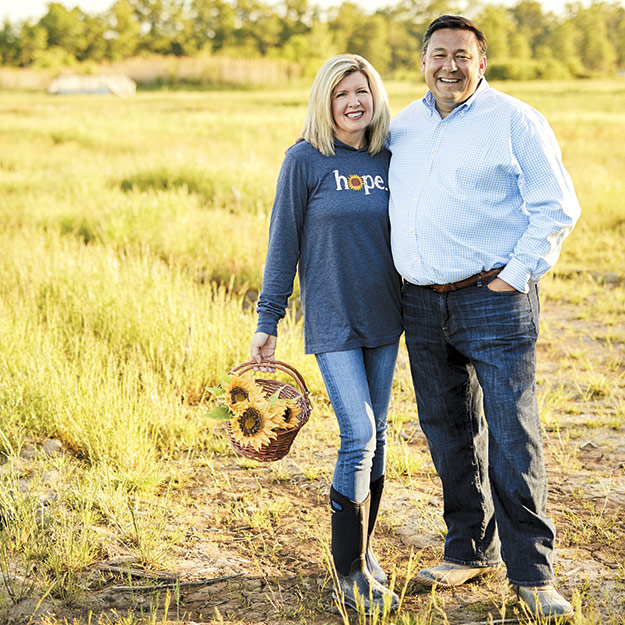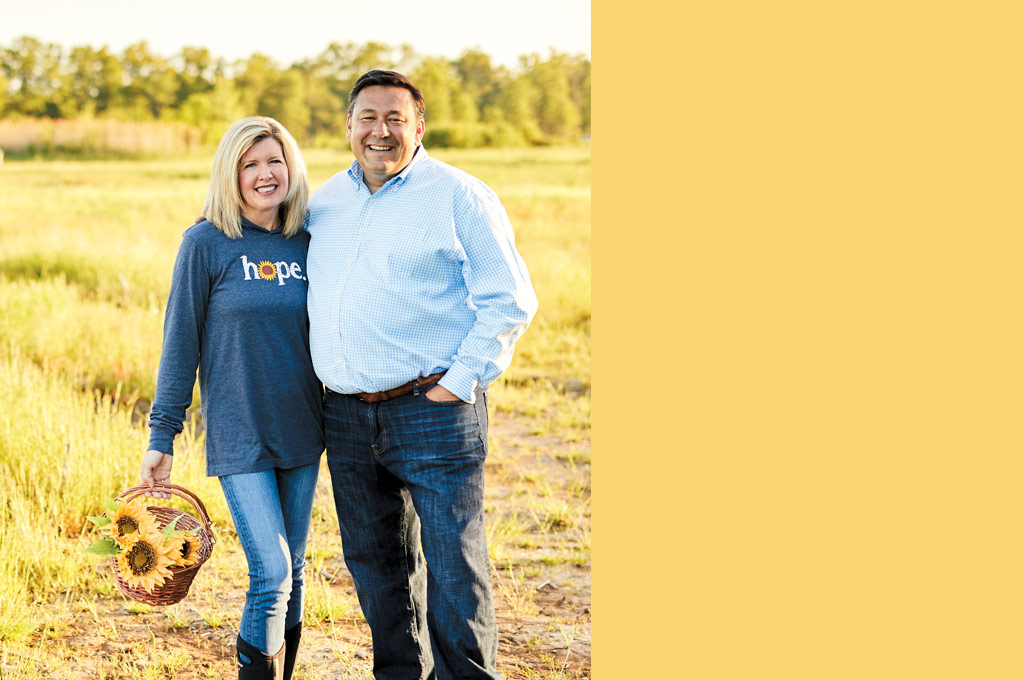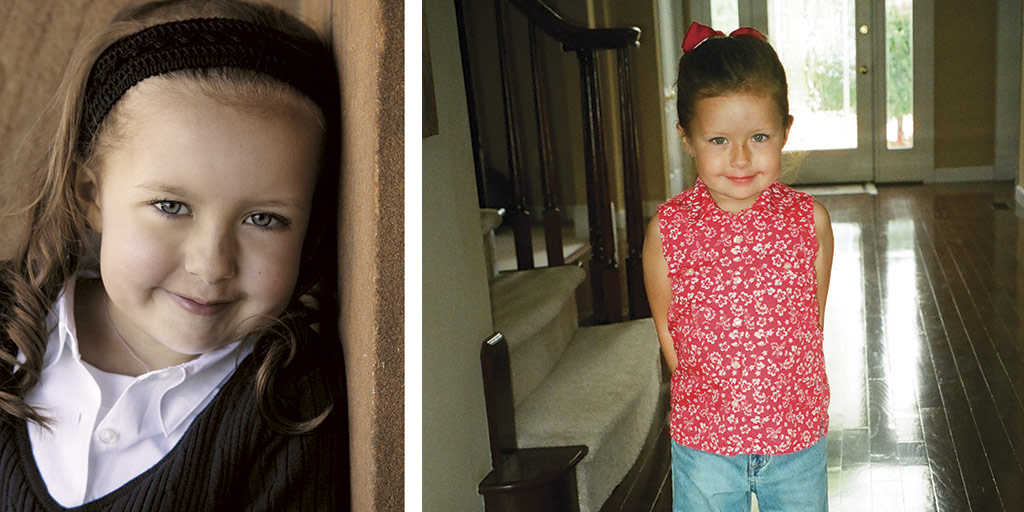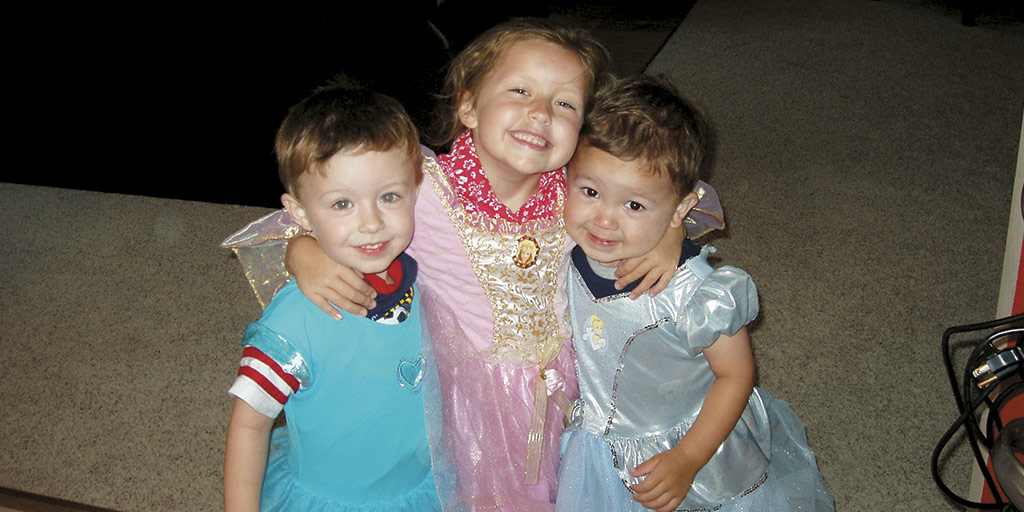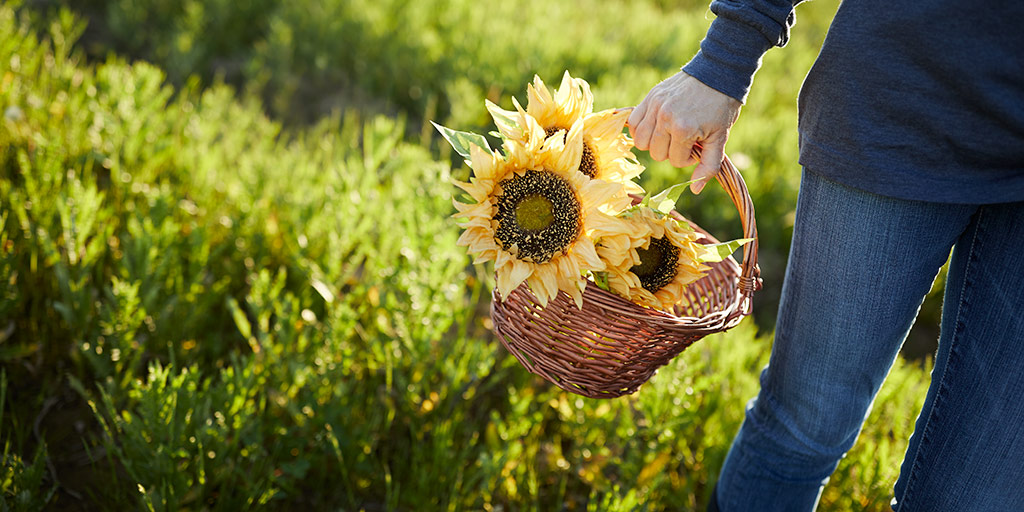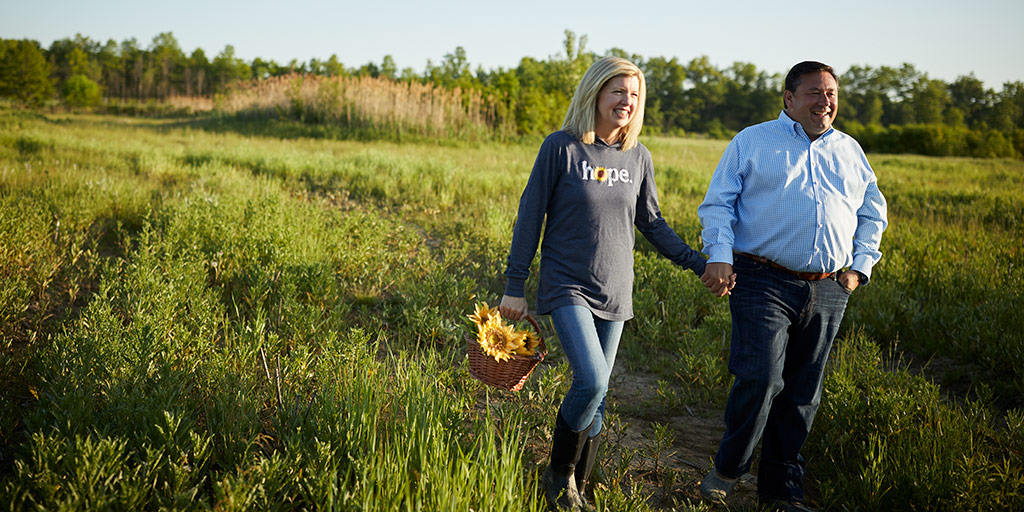Megan and Ed McNamara sit on a bench built into a raised, wooden deck overlooking an empty field. Nestled up against Interstate 90 in Avon, the knee-high grasses and weeds grow in spotty rows.
It’s early June. But in a few weeks, the McNamaras will be busy, coordinating volunteers and working with a local farmer to plant the 25 acres with sunflowers, which bloom into a sea of happy yellow in September.
As the gray sky starts to gently rain down, Megan opens her umbrella decorated with a large sunflower. She sighs, not at the weather, but at the circumstance.
This field, Maria’s Field of Hope, bears her daughter’s name and commemorates children touched by pediatric cancer. Maria died when she was just 7 years old from a type of brain cancer known as diffuse intrinsic pontine glioma. Since the field was first planted in 2014, this ground has been a destination for tens of thousands of visitors who have pulled off to the side of the road to remember those who have died, celebrate those who have survived and pause to think about all the lives affected by the disease.
The sounds of the cars whizzing by on the highway a few yards away are drowned out by the rumble of construction: a bulldozer destroying the ground in front of it, a dump truck unloading gravel and the high-pitched beep warning of the equipment’s every movement.
Although the couple has sat in this field hundreds of times, this is dramatically different. The machinery tearing up the ground has its steel sights set on the field of sunflowers, making 2018 almost certainly the last time they’ll bloom here.
“It’s depressing,” says Megan. “This field has meant so much to so many people. Watching it get plowed under is just hard to watch.”
_______
Maria Caroline McNamara was born Jan. 11, 2000. She was the first child for Megan and Ed, who met during their junior year of high school at Magnificat and St. Ignatius.
Maria’s sunny disposition shined for all to see. She loved connect-the-dot books and absolutely adored her ballet and jazz classes at Emjaez Dance Studio in Bay Village.
By 6, she cherished her big sister role to brothers Eddie, Aidan and Blake, regularly suggesting activities from miniature golf to dressing them up in costumes.
“Her brothers looked up to her as a leader of the family,” Ed says. “They learned so much from her about how to laugh and play.”
Maria had always been the epitome of good health, no ear infections or trips to the emergency room for stitches. Then in 2006, her parents started to notice changes in her behavior. Their bright and lively daughter suddenly became ornery, lashing out at odd times and making strange demands.
“She kept asking us to carry her down the stairs,” Ed recalls. “She had never wanted us to do that before and would get breakdown upset if we said no.”
Still, the McNamaras chalked up the changes in mood to her transition to kindergarten. Friends and family advised that it was likely a difficult phase that Maria would outgrow. But when they started noticing physical changes, Ed and Megan knew something more was going on. One side of Maria’s face started to droop, giving her the impression of a constant frown, which her parents first associated with her negative change in attitude.
“One day when I was brushing her hair, I said to her, ‘Stop making that face,’ ” Megan says. “I saw that she was trying, but nothing was happening. I tried pushing up the side of her cheek and asked, ‘Can’t you smile?’ and she clearly couldn’t.”
Megan immediately scheduled an appointment with their pediatrician. The doctor diagnosed Maria with Bell’s palsy, a temporary neurological condition that causes partial paralysis in the face, based solely on the physical examination.
The McNamaras were told Maria’s condition would resolve itself in a year or less. Still they sought a second opinion from a specialist at University Hospitals, who confirmed the initial diagnosis with a physical exam.
About a month after the diagnosis, though, Ed brought Maria to the hospital to visit Megan and her new brother, Blake. Maybe it was Megan’s heightened mother’s instinct, but she knew something much more serious was wrong with her daughter.
“Her energy just seemed off,” says Megan. “I just felt she was very sick.”
When they arrived home from the hospital, Maria’s physical state started to deteriorate even further. She was having trouble walking, could not climb the stairs and went to bed around 4 p.m.
They asked a doctor in the neighborhood to look at her. “He immediately knew it was more than Bell’s palsy,” Ed says. “There were just too many things wrong.”
A CT scan revealed a cyst in Maria’s brain. Surgery was scheduled to remove it. But after a few hours of waiting at the Cleveland Clinic on the day of the procedure, they were asked to relocate to the third floor.
“We had no idea what the third floor was or why we were being asked to move,” Megan recalls. “Then the elevator door opened and the sign told us it was the cancer floor.”
Until that moment, they’d never even considered cancer as a possibility. Within minutes, a surgeon came into the room and informed them that there was nothing he could do for their daughter.
What are they talking about? Ed thought.
“We could hear Maria laughing in a room across the hall,” he recalls. “She couldn’t possibly have cancer.”
The next few hours were agonizing. A specialist arrived and showered Maria with gifts — bubbles and costumes — as if it were the 6-year-old’s birthday.
But no one on the medical staff would offer a definitive diagnosis until Maria received an MRI in the morning.
So Ed began scouring the internet. “After only a little bit of searching, I found online what was wrong,” he says. “The doctors knew it. They just were scared to tell us.”
The follow-up MRI revealed a racquetball-sized tumor that confirmed the diagnosis. Maria had diffuse intrinsic pontine glioma, or DIPG, in which tumors form in the glial cells of the central nervous system. The doctors told Megan and Ed that Maria’s tumor could not be removed.
Because Maria’s form of cancer is both rare and deadly, very little is known about it. Compared to 1.5 million adult cancer diagnoses per year, pediatric brain tumors account for just 3,000 to 5,000 cases.
“Brain cancers are the No. 1 killer of all cancers, but their frequency is significantly less than other forms of cancer,” says Dr. Mark Kieran, clinical trial lead for pediatrics at Bristol-Meyers Squibb and a close adviser to the McNamaras over the years.
Within hours of the initial diagnosis, Ed and Megan began calling specialist throughout the country to find some answers.
“It was like crickets,” Megan says. “There were barely any doctors who knew what they were dealing with. All the science at that time came from biopsies of tumors secured from children postmortem — and we needed answers way before that.”

